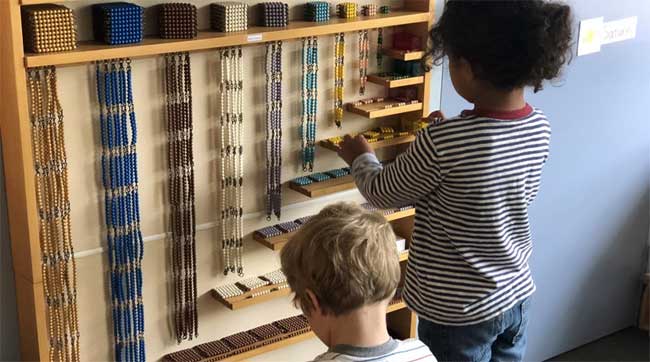The United Nations Excessive Fee for Human Rights states that each youngster has a proper to play, simply as she or he has a proper to life, training, and well being. Theorists reminiscent of Lev Vygotsky declare play helps youngsters improve their potential to work together with others, apply taking over totally different roles, and develop creativity. Above all, by play, youngsters grasp new abilities and study new details about the world.
Dad and mom and Guilt
Too typically, mother and father misunderstand research about the advantages of play. They find yourself feeling responsible that they aren’t doing sufficient to information their youngsters’s growth. They fear that if they don’t provide their youngsters with the appropriate play experiences on the proper ages, their youngsters will fall behind different youngsters, fail in school, and in the end fail at life!
Quickly studying turns into a contest. By controlling the best way their youngsters play, mother and father try to realize a particular result-quantifiable success. Afraid that skipping anybody exercise will put their youngster behind different youngsters, mother and father signal their youngster up for all the things and fill any free time left with rote flashcard drills.
Actions reminiscent of ballet classes, music classes, karate classes, overseas language courses, and participation in sports activities groups are all great taken one or two at a time. Nonetheless, when you pile too many on directly, you neglect some of the necessary developmental alternatives you can supply your child-open-ended, child-driven play that’s shared at sure occasions with you.
The Advantages of Play
Youngsters study important life abilities by copying grownup position fashions. From the second your youngster is born, you might be their first and finest toy and playmate. As they get older, connecting with them by shared play experiences strengthens the bond between father or mother and youngster and retains strains of communication open even when each day schedules develop into extra hectic and time collectively more durable to rearrange.
Nonetheless, youngsters additionally want time and area to discover the world and their imaginations by themselves. Adults must not ever take over playtime and direct a toddler’s each motion. As Kenneth R. Ginsburg (affiliate professor of Pediatrics on the College of Pennsylvania College of Drugs) and two committees for the American Academy of Pediatrics wrote in a current medical report, “When play is managed by adults, youngsters acquiesce to grownup guidelines and considerations and lose some advantages of play, notably in creating creativity, management and group abilities.”
Selecting and utilizing acceptable toys can assist you perceive when to interact actively in play together with your youngster and when to let your youngster take cost…
Lively Interplay
For a lot of toys, each you and your youngster should take an lively position as a result of the toy requires at the least two gamers. For youthful youngsters, you’ll be able to each take an lively position in rolling or throwing balls forwards and backwards. For older youngsters, sports activities tools reminiscent of bats, mitts, soccer balls, basketballs, and footballs can result in hours of enjoyable, bodily exercise, and unobtrusive classes in taking turns, following the foundations, good sportsmanship, and (when you play collectively in opposition to one other opponent) cooperation and communication. Multi-player video games (reminiscent of chess, checkers, Monopoly, or Jenga) can even reinforce these classes.
Lively Modeling and Passive Following
Childhood needs to be a journey, not a race, with loads of time allowed alongside the best way for investigations and discoveries. Get to your youngster what the American Academy of Pediatrics calls “true toys,” ones that result in open-ended play as a substitute of 1 or two closed-ended outcomes {that a} youngster is rushed to grasp. Such toys embrace blocks, constructing units reminiscent of Legos, costumes and props for dress-up and role-playing, dolls and puppets, folks and animal collectible figurines, toy playsets, play meals, and toy automobiles.
With these types of open-ended toys, sit again at first and let your youngster look at them earlier than you soar in with instructions, directions, or solutions. By no means assume there is just one proper option to play with a toy. It’s positive in case your youngster serves constructing blocks for tea in teacups or tucks vehicles into doll beds for naps. Offering your youngster with the bodily and psychological area wanted to mess around with the concept these objects will be something is precisely what your youngster wants.
Except your kid’s play turns harmful, permit your youngster to take the lead when taking part in along with these toys. You possibly can play alongside your youngster, however don’t upstage or right her or him. For role-playing, let your youngster assign the roles. Typically, youngsters need to be in energy and order adults round in methods not allowed in real-life.
Take note of your kid’s pursuits and skills and choose toys accordingly. In case your youngster does ask you for assist, then you’ll be able to mannequin the best way to act out a sure situation or reveal a helpful technique for connecting components of a puzzle or a constructing set (for instance, fixing a puzzle by assembling its border first). Should you discover your youngster is rising annoyed with a toy, consider whether or not the duty at hand is simply too troublesome. Maybe the toy might be extra acceptable a couple of months or perhaps a 12 months later.
Top-of-the-line issues you are able to do throughout imaginative play is to assist your youngster develop language abilities. Touch upon what your youngster is doing to introduce new vocabulary, saying issues reminiscent of, “I see you parked the crimson tractor by the inexperienced block.” Or you’ll be able to gently encourage your youngster to speak about what she or he is pretending, asking questions reminiscent of, “What are you dressed as? What do you assume a fairy/physician/astronaut does?”
Solo Play
Some toys are nice for a kid to play with alone-those with what Montessori theorists name “management of error,” the place a toddler can inform by himself or herself if she or he is finishing it appropriately or incorrectly. It’s good for a kid to play imaginatively with the items of such a toy in methods totally different from the acknowledged objective of the toy, however it is usually helpful for her or him to determine the best way to stack, order, or assemble it the appropriate approach. Toys of this type embrace stackers, sorters, and puzzles. Dad and mom can supply assist if requested, however in any other case permit your youngster to grasp the toy alone and in his or her personal time.
Many arts and crafts actions reminiscent of drawing, portray, beading, and clay play are additionally finest pursued virtually fully alone by a toddler. As Susan Striker, writer of Younger at Artwork and the Anti-Coloring E book collection, says, when youngsters see an grownup draw or create one thing, typically they concentrate on copying that again and again to please the grownup as a substitute of creating their very own, particular person creativity.
Striker champions letting youngsters make their very own discoveries about every medium, whatever the mess. That mentioned, tidier mother and father can safely permit themselves to at the least clarify to a toddler the best way to use the supplies, after which they’ll step again and let the kid create no matter she or he needs. An grownup ought to by no means step in and proper a toddler when a toddler is creating artwork. It doesn’t matter if strains are usually not drawn straight or if a clay individual is lacking ft. The method of making, not the ultimate product, is the necessary half at this stage.
What You Can Do
As a father or mother, you’ll be able to assist youngsters develop in so some ways. Play skilled B. Caldwell notes that oldsters can assist play by offering “time, area, supplies, or social companions [such as siblings].” Simply all the time understand that, as Ginsburg says, one of the best ways to make sure that your youngster develops into a beautiful grownup is to “[share] pleasurable time collectively.”



